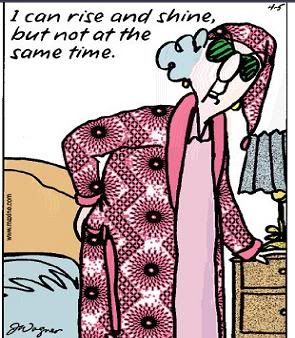AAA abdominal aortic aneurysm
ABCs airway, breathing, circulation
abdominal radiotherapy - treatment of disease in the abdomen by exposure to radiation
ABG arterial blood gas
abscess
ABW adjusted body weight
ACLS advanced cardiac life support
adenocarcinoma
adenomatous - pertaining to a nodular hyperplasia of a gland
adenopathy - enlargement of a lymph node
adjuvant - substance added to a drug product formulation that affects the action of the active ingredient in a predictable way.
AE above elbow
AEIOU TIPS a mnemonic for altered mental status check
afferent - Inflowing; conducting toward a center, denoting certain arteries, veins, lymphatics, and nerves. synonym : esodic
AFO ankle-foot orthosis or othotic
aggregating
aggregating - crowding or clustering
AKA above-knee amputation
alk phos/alk P-tase - alkaline phosphatase
Allocraft C-ring - cervical spacer used in diskectomy and fusion surgery of the spine
ALS advanced life support
AMA against medical advice
ambo - transporting ambulance
Ambu - ambu bag, manual resuscitative device
amnion - bag of waters; the extraembryonic membrane of birds, reptiles, and mammals, which lines the chorion and contains the fetus and amniotic fluid
amp ampule
anastomosis - natural communication, direct or indirect, between two blood vessels or other tubular structures. communication
anastomotic
anemia
antegrade - extending or moving anterialy
Anterior drawer test ankle
anterior toward the front
anterolisthesis
anteroposterior
anteroposterior view (AP) X-ray goes from source anterior to detector posterior
AO X3 alert and oriented X 3
AP - anteroposterior
AP/PA anteroposterior/posteroanterior
apnea
appendiceal mucosa
appy - appendectomy
arteriosclerotic - hardened arterial walls.
Aspen cervical collar (brand) - cervical stabilization
assay - any quantitative test
atelectasis - respiratory
atheromatous plaquing - when there is fibrous deposit accumulating on the artery lining.
ATLS advanced trauma life support
atrophy - decrease in tissue bulk or structure from its previous size
atrophy - weakening or degeneration
attenuation
atypia - not typical
autoimmune
autolysis - postmortem change seen in cellular components
avulsion - forcible tearing or separation
Ba barium
bag/banana bag - bag of IV fluids given to alcoholics or patients with nutritional deficiencies or chemical imbalances; named because of its yellow color, it contains multivitamins, folate, thiamine, and sugar
bagging - artifical respiration performed with a respirator bag, such as an ambu bag
barium
BE barium enema
benign - somethin which is not recurrent or progressive
berylliosis - respiratory
BF black female
bicarb - bicarbonate
bili - bilirubin
biliary
biliary tree
bilirubin - bile pigment resulting from degradation of hemoglobin in the liver
Binky test - ability of an infant to evidence basic stability and an interest in "the important things in life" by placidly sucking on a binky
biochemistry - study of chemical properties and substances which interact with the living body
biopsy - removing tissue from a living patient
BKA below-knee amputation
bleed - hemorrhage
BLS basic life support
BM black male/bowel movement
BMI body mass index
BNP Cardiac marker for heart failure.
BPD - biparietal diameter - diameter of fetal head from one parietal eminence to the other.
brace - knee, leg, arm
Brunner glands
BSA body surface area
bulge - disk protruding out against the spinal cord
burn therapy - for patients with severe burns (grafting, whirlpool)
BVM bag-valve-mask
C. diff (Clostridium difficile) Test for bacterial toxin in feces.
C1-7 cervical vertebrae 1-7
CA-125 Ovarian cancer screening to determine treatment.
CABG - coronary artery bypass grafting
cachexia - wasting or atrophy due to starvation
calcific
calcitonin - levels greater than 100 pg/mL may occur in medullary thyroid carcinoma (MTC), leukemia, and myeloproliferative disorders
calculus
caliectasis
caliectasis - means of dilation of the calices and is often a result of obstruction or infection. This term can be used interchangeably with calicectasis.
CAPD continuous ambulatory peritoneal dialysis
capillaries - smallest blood vessels
carcinoma
cardiomegaly - anbormally enlarged heart
carotid
caseating - necrosis in which tissue is changed into a dry mass resembling cheese.
CAT scan computerized axial tomography scan
catheter
caudal toward the feet
cavus foot - high arch
CBC (complete blood count) Simply stated, measures red blood cells, white blood cells, and platelets.
C-cane straight cane with curved handle
CCU coronary care unit
cecum - the first part of the large intestine, forming a dilated poouch distal to the ileum and proximal to the colon, giving off the vermiform appendix. cul-de-sac
celiotomy - transabdominal incision into the peritoneal cavity
centigray - unit of absorbed radiation
centrally
centrum semiovale
cerebrovascular
Cerrobend blocking
champagne tap - clear tap; no blood
chem dep - chemical dependency
chemotherapeutic
chemotherapy
cholecystectomy - surgical removal of the gallbladder
cholecystitis
choledochojejunostomy
cholelithiasis
cholesterol - fatty material normally found in blood but also occurring in certain tissues and diseases
CHOP - anticancer drug combination - cyclophosphamide, doxorubicin, vincristine, and prednisone
chorioamnionitis - inflammation of the chorion and amnion
chorionic villi - human embryology, the cellular, outermost extraembryonic membrane
CID cervical immobilization device
CIN cervical intraepithelial neoplasia - femal reproductive
cine - prefix - movement, as in cineradiogram
cine - see-nay
circumference
cirrhosis - liver disease commonly caused by alcoholism
cisplatin
claudication - limping, lameness
clival lesion - one pertaining to the clivas
clivus - bony surface in the posterior cranial fossa sloping upward from the foramen magnum to the dorsum sellae
CMG cystometrogram
collagen - major protein of white fibers of cartilage, bone, and connective tissues
collimated -
cone biopsy - biopsy that is cone shaped
cone biopsy is also referred to as conization
congenital adrenal hyperplasia - endocrine
contiguous - touching or connected throughout in an unbroken sequence
contrast - difference in visual density in an x-ray that results from a difference in radiolucency of the subject
cortex
cortical - relating to an external layer
cortical blindness
cortical sulci
Costoclavicular maneuver - evaluate thoracic outlet syndrome/costoclavicular syndrome
cotyledons - any portion of the uterine surface of the placenta
CPM continuous passive motion
CPR cardiopulmonary resuscitation
cranial - toward the head
crepitus - crepitation, crepitance - a crackling or grating noise from the joints, skin, or lungs.
CREST - calcinosis cutis, Taynaud phenomenon, esophageal motility disorder, sclerodactyly, and telangiectasia syndrome.
cribriform - pierced with holes, like a sieve
cricopharyngeal
crit - hematocrit
CT computed tomography
CT Scan - cross-sectional images along a single axis of the body or body structure created by a computer from multiple x-ray images.
curettage - surgical scraping
CVA cerebrovascular accident
cystoid macular edema - swelling of macula of eye resulting from injury, surgery, or disease
cystourethrogram
Cytoxan
D5 or D5W dextrose in a 5% normal saline solution
de Quervain disease - wrist
debulking
degeneration - broad term in pathology referring to changes in tissue chemistry
dense - quality of being compact
density
desmoplasia - formation and development of fibrous tissue
desquamation - the shedding of the cuticle in scales or of the outer layer of any surface
DF dorsiflexion
DHL - diffuse histiocytic lymphoma
diabetic retinopathy - affecting patients with diabetes
diagnostic test - for disease clarification
DICOM digital image communication in medicine (meaning transmission between imaging devices)
differential Summary of various types of white cells in a stained smear of blood.
disease atrophy - results from prolonged immobilization or lack of movement.
DISH - diffuse idiopathic skeletal hyperostosis
distal toward the fingers/toes
distortion - state of being out of normal shape or position
diverticula - small bulging sacs pushing outward from the colon wall
diverticulitis - inflammation of a diverticulum
diverticulum - a circumscribed pouch or sac occurring normally or created by herniation of the lining mucous membrane through a defect in the muscular coat of a tubular organ
DJD degenerative joint disease
DNI do not intubate
DNR do not resuscitate
DOA dead on arrival
Domeboro - astringent wet dressing for relief of inflammatory conditions of the skin; ruduce weeping that may occur in dermatitis
duodenal
duodenal bulb
dysphagia - trouble with eating or swallowing
dysplastic - cells or tissue that have undergone abnormal development
dystrophic calcification - calcium deposits in inflamed tissue, fibrotic or degenerative tissue
ECC emergency cardiac care
echo - prefix - repeated sound, as in echocardiogram
echo - slang for echocariogram.
echogenicity
ectocervical
edema - excessive accumulation of fluid in tissue
EEC - endocervical curettings
EEG electroencephalogram
efferent - conducting fluid or a nerve impulse outward from a given organ, cell, or part thereof, the efferent connections of a group of nerve cells, efferent blood vessels, or excretory duct of an organ
effusion - escape of a fluid into a part; exudation or transudation. Effused materioal; and exudate or transudate
electrolyte Minerals of the body which have an electrical charge and are found in blood, urine.
ellipse - oval or oblong shape
emergency room or department - an area in a hospital or clinic that is staffed and equipped to provide emergency care to persons requiring immediate medical treatment.
emesis
EMS emergency medical service
EMT emergency medical technician
endocervical
Endo-MATE endotracheal tube holder - ENT device
endoscopy
endoscopy - examination of the esophagus, stomach, and duodenum using a flexible tube with scope
enterocleisis - blockage in the alimentary canal
enteroclysis - radiographic procedure
eos - osinophils
eosinophilic
eosinophilic granuloma - disease marked by formation of granulomas in the bone
epi - epinephrine
epi sick - pale, green, nauseous, chest-pounding, tachycardic appearance of patient who has received aggressive subcutaneious epinephrine therapy for anaphylaxis or status asthmaticus
epicondylitis - tennis elbow/swimmer's elbow
epis - epithelial cells
epithelium
epithelium - cellular covering of skin and covers the internal organs
ER external rotation
ERCP endoscopic retrograde cholangiopancreatography
erythrocyte sedimentation
erythropoiesis - formation of erythrocytes
esophagram
ESR (erythrocyte sedimentation rate, sed rate) Blood test to determine inflammation in the body.
ESR erythrocyte sedimentation rate
ETA estimated time of arrival
ethmoid
excisional biopsy - removal of entire tumor, lesion, or affected diseased organ from a living patient
exocervical - external to the cervix
exploratory laparotomy - surgery performed to examine and/or visualize the abdomen.
extension - patient lengthens or straightens a flexed limb.
External rotation test - ankle
extrarenal pelvis - portion of the renal pelvis expansion located outside of the kidney
FACEP Fellow of the American College of Emergency Physicians
false negative - normal or negative result despite disease presence in a person
falso positive - abnormal or positive result in an otherwise healthy person
fatty infiltration - fat content increases in connective tissue areas of various organs
FDIU fetal death in utero
FHT fetal heart tone
fibrinous
fibroadipose - fibrous and fatty
fibrosis
fistula - digestive
fistulous - of or pertaining to an abnormal passage from one epithelial surface to another epithelial surface.
flexion - patient bending a specific part of the body
fluor/o root word - luminous, as in fluoroscopic
fluoro - slang or short for fluoroscopy
FNA - fine needle aspiration - removing cells via suction from a mass
follicle - a spherical mass of cells
FOOSH fall onto outstretched hand
foraminal
formalin - 10% solution of formaldehyde in water and is used to preserve specimens for analysis
fossa
four H's - hypoxemia, hypoglycemia, hypovolemia, and high bladder
French Horn shoulder test shoulder
frontal (coronal) - vertical plane divides the body into anterior and posterior. PA view of chest x-ray uses the frontal plane.
frontoparietal
frozen section - rapid freezing of water in tissue and embedding with parffin or other artificial medium
FWW front-wheel walker
Galeazzi sign - hip disorder evaluation
gallbladder
ganglia
gangrene - local and extensive necrosis usually affecting an extremity
gastritis
Gastrografin
gastrohepatic
gastrointestinal
gastrojejunostomy
gauge
GCS Glasgow coma scale
genitourinary
GGT Test to screen for liver disease, alcohol abuse. .
GI gastrointestinal (usually upper GI—the area examined)
gorked - obtunded or not alert, either acutely or chronically
gout - metabolic disease of uric acid crystals in tissues
grab bars - for bathroom safety
gram - suffix - record, as in cardiogram
granuloma
granuloma - tumor caused by infection or inflammation
graphy - suffix - process of recording, as in ultrasonography
GSW gunshot wound
H&E - sections stained with haematoxylin and eosin
headache
Heberden nodes - bony swelling around joint margins
Helicobacter
hematocrit The proportion of blood that consists of red blood cells.
hematology - study of blood
heme negative - no blood detected on rectal exam
hemiplegia - paralysis on one side of the body
hemithorax - one side of the chest
hemiwalker - quad cane/ walker combo
hemoglobin The protein in red cells that carries oxygen.
hemorrhage
HF Hispanic female
HIDA hydroxyiminodiacetic acid
hidradenitis
hilar - pertaining to a hilum
hilum - part of an organ where the nerves and vessels enter and leave
histologic
HM Hispanic male
HOB head of bed
HOD - heroin overdose
Hodgkin disease - lymph
Hoyer lift - assistance in lifting bed/chair ridden patients
hydatidiform mole - female reproductive
hydrocele - male reproductive
hydrocephalus - large brain
hydronephrosis
hyperchromatism - abnormal increase in pigmentation
hypernephroma - excretory
hyperplastic -abnormal increase in the number of normal cells or tissue which increases its volume
hypertrophy
hypo - below normal
hypo - hypodermic injection
hypoplasia - underdeveloped
hypoplastic - underdeveloped
hypotonia - muscular tonicity loss
IABP intraaortic balloon pump
IBW ideal body weight
ileus - digestive
iliac - of or relating to the hipbone
IM intramuscular
immobilizer - knee
inapsine - trademark preparation of droperidol, an antiemetic (among other things).
incisional biopsy - surgical removal of a part or section of a tumor, diseased organ, or lesion
inclusion
infarction - necrosis that is localized and due to an obstruction
inferior below
infiltration - passing into or through by permeating
ingested
interventional radiology - the use of image guidance for therapeutic and angiographic procedures
intimal - an abnormal narrowing of a passageway
intracellular
intracranial
intraductal papilloma - breast
intrahepatic
intravenous
inversion - patient turning inward
IO intraosseous
is/o root word - same, as in radioisotope
ischemic
isodose
ITB iliotibial band
IV intravenous
IVDA intravenous drug abuser
IVP intravenous push
IVP intravenous pyelogram
jaundice - yellow or greenish color in tissue as a result of liver disease
Jobst boot (brand) foot
JONES a mnemonic for assessment of rheumatic fever
KAFO knee-ankle-foot orthosis
keloid - skin
keratin
keratin - fibrous scleroprotein occurring in the outer layer of skin, hair, nails, etc.
koilocytotic /koilocyte/ koilocytosis - concave or hollow cell. the presence of ambnormal koilocytes that a vacuolated with clear cytoplasm or perinuclear halos and nuclear pyknosis
KUB kidneys, ureters, bladder
kyphosis - humpback
L1-5 lumbar vertebrae 1-5
lac - laceration
Lachman test - anterior cruciate ligament rupture (ACL)
lacunar
laminectomy
lap coly - laparoscopic cholecystectomy
lateral decubitus - Patient lying down on side, x-ray beam positioned horizontally
lateral toward/from the side
left lateral view - X-ray goes from a source located to right of patient to a detector located to the left of the patient.
lesion - a pathologic change in the tissue
leukemia
leuks - leukocytes
lido - lidocaine
ligamentum flavum hypertrophy
light microscopy - brings out features otherwise not seen in specimens
linear
LMA laryngeal mask airway
LOC loss of consciousness
localization - the placement of something is determined during...
longitudinal plane - cuts along the long (longitudinal) axis of the body.
LR lactated Ringer
LS lumbosacral (films)
lucency - something that has a softly bright appearance or is marked by clarity or transparency.
lucent - suffix - to shine, as in translucent
LWBS left without being seen
lymph nodes
lymphangitic - pertaining to inflammation of a lymphatic vessel
lytes - electrolytes
M&M morbidity and mortality
macule - skin
mag - magnesium
Magnevist
malignant
mammography - radiography of the breast
mass
maxillary
MCH (mean corpuscular hemoglobin) Measurement of average amount of hemoglobin inside a red blood cell.
MCV (mean corpuscular volume) Measurement of average size of RBCs.
medial toward the middle
medullary - cancer of the medulla of a body part
medullary carcinoma
melena
membrane
MEN - multiple endocrine neoplasia - conditions that result in overactivity and enlargement in certain endocrine glands. MEN syndromes are typically inherited conditions
metastatic
metastatic - when a disease spreads to another part of the body or another organ
methylcellulose
mets - short or slang for metastases
microbiology - study of microscopic living things, such as fungi and bacteria
microcalcifications
microhematuria - small or microscopic presence of blood or red blood cells in the urine
midcoronal (midaxillary) plane - longitudinal plane which cuts through the head and body along the coronal suture of the head and extended cut down through the body.
midline shift - a displacement of the midline of the brain to one side of the head due to swelling
midsagittal (median) - right and left halves. Lateral chest x-ray uses the sagittal plane.
mitotic
mitotic - pertaining to mitosis, cell division
MMT manual muscle test
moldable insert - lumbosacral
monos - monocytes
MPDO - microscopic performed, description omitted
MPGR - multiplanar gradient recall
MRI magnetic resonance imaging
MTC - medullary thyroid carcinoma
mucosa
MUGA multiple gated acquisition
muscularis
MVA motor vehicle accident
myelogram
myelographic
myeloproliferative
myoclonic - shocklike contractions of a muscle or a group of muscles
nausea
necrosis - physical and chemical changes of tissue, cells, or organs which is seen in death
needle biopsy - removing inner core of tissue, such as liver and kidney.
neural
neuts - neutrophils
NG nasogastric (tube)
nitro paste - Nitrol, nitroglycerin paste
nodularity
nodularity - increased density of breast tissue
nonsteroidal
NS normal saline
NSR normal sinus rhythm
nuclear medicine - the use of radioactive materials to identify or destroy lesions and disease processes.
nucleus - structure that houses the chromosomes
NWB nonweightbearing
O & P orthotics and prosthetics
oblique view - X-rays will travel in a slanted direction at an angle stemming from the perpendicular plane. Regions normally hidden in PA or AP view will appear in oblique views.
occipitofrontal diameter
occlusion
OCG oral cholecystogram
OD overdose
omentectomy - partial or total excision of the omentum
Omnipaque
opaque - suffix - obscure, as in radiopaque
OPQRST a mnemonic for pain evaluation
ossicle - small bone
ossification - pathologic calcification as well as bone tissue formation
osteoarthritis - may require hip replacement (arthroplasty)
osteoblastic
osteochondroma - skeletal
osteopenic - bone deficiency
osteophyte - a bony abnormal outgrowth
osteophytes
ovoid - rounded like an egg
PA posteroanterior
PACS picture archival and communications system
palliative
palliative - recuding severity of disease without curing it
palmar toward the palm of the hand
PALS pediatric advanced life support
pancreatic
panel - tests frequently performed as a group
Pap smear - Cells are detached from a surface (primarily the uterine cervix).
papule - skin
paracentral
parakeratosis - pathology seen in psoriasis
parakeratosis - persistence of the nuclei of keratinocytes as they rise into the stratum corneum of the epidermis. It in normal in the true mucous membrane of the mouth and vagina.
parenchymal - pertaining to the essential elements of an organ
parietooccipital
peptic ulcer - digestive
perfed appy - ruptured appendix
periaortic
periappendicitis
perihilar - around the hilum
periosteal - situated around bone
peripheral toward the surface
persistent
PET positron emission tomography
Phalen maneuver - carpel tunnel syndrome evaluation
Phalen test
phleboliths - calcification or stone within a vein.
physiatrist - person who practices physical medicine and rehabilitation
PICC - peripherally inserted central catheter
placenta
plane
plane - two dimensional flat surface
plantar fasciitis - foot
plantar toward the sole of the foot
plaquing
plasia - development or formation
platelet count Test to determine how many platelets (to clot blood) in the blood.
pleomorphic
pleomorphic/ pleomorphism/ pleomorphous - the occurrence of various distinct forms by a single organism or within a species (having various distinct forms)
PM&R / Physical medicine and rehabilitation - branch of medicine that covers the ongoing treatment for physical problems, such as severely broken bones, torn ligaments, knee and hip replacements, rehab for spinal injuries, postsurgical rehab, and similar conditions.
pneumothoraces
pneumothorax - abnormal presence of air in the chest outside the lung
polycystic kidney - excretory
polyp - a mass of tissue or vascular growth
polyps
post pregnancy scarring - pelvic floor rehab is used for this, including kegel exercises
postauricular - situated to the back of the ear
posterior toward the back
posterior-anterior (PA) - most common chest x-ray view. X-ray goes from source posterior to detector anterior.
posteroanterior - direction from posterior to anterior
PQRST a mnemonic to quickly evaluate chest pain
Probe-to-bone test - evaluate osteomyelitis/diabetic foot ulcers
PROM passive range of motion
prone - Patient lying on the stomach, face down
proximal - situated nearest the point of origin
proximal toward the limb's attachment
pseudostratified - closely packed cells that are all attached to the basement membrane, but that appear to be layered.
punch biopsy - removal of a plug of skin or mucous membrane with a device called a "punch."
purulent
putrefaction - also called decay (of the body after death)
PUW pick-up walker
QC quad cane
QNS - quantity not sufficient
quadrant - one quarter of a circle
Quadriceps femoris muscle angle knee
quant beta/Q-beta - quantitative beta HCG
radiation therapy - the use of radiation for treatment of disease
reagent - chemical substance which is made to react with another substance (such as on a urine dipstick).
recumbent - patient lying down, either prone or supine
recurrence - a return of symptoms or relapse
reflux - abnormally backward flow of body fluids
renal pelvis - expansion of the upper end of the ureter.
reproducibility - ability of a test to yield the same result time and again
resorption - the assimilation of substances previously produced by the body back into the body.
rete ridges - downward thickening of the epidermis between the dermal papillae
RF (rheumatoid factor) To assess for rheumatoid arthritis.
rickets - osteomalacia in children
rickets - skeletal
roentgen/o - root word - x-ray, as in roentgenology
RRR regular rate and rhythm
rule of 9's - for assessing percentage of body surface burned
rupture
sagittal (lateral) - Unequal right and left sides.
salpingo-oophorectomy - removal of the ovary and its uterine tube
satting/sat - oxygen saturation
SBQC small base quad cane
scar - injured tissue that has healed and has a fibrous cover
scint/i root word - spark, as in scintigraphy
screening test - used to identify disease or problems before further harm
SD shoulder disarticulation
senile atrophy - irreversible chemical changes due to agin
serosal
serum/urine ozm(s) - serum/ urine osmolality, osmolalities (lab)
shave biopsy - removal of a thin skin layer with a blade
SLR straight-leg raise
son/o root word - sound, as in sonogram
specificity - refers to a test's ability to reflect a specific abnormality
SPECT - single-photon emission computed tomography
spermatocele - epididymal cyst
sphenoid
Spica splint thumb
spiculations - small needle-shaped body
squamous - scaly or platelike
staphyloma - special senses (eye)
stenosis
stenosis - an abnormal narrowing of a passageway
stepdown unit - a monitored setting, not as intense as any type of ICU
steroid
Straight leg raise lumbar spine
stroma - the matrix or supporting tissue of an organ
Stryker (brand) hip, knee, shoulder implants
subarachnoid - layer of tissue between the pia mater and the arachnoid
subpulmonic
sulcus - anatomic nomenclature for a long groove or furrow, especially one of the cerebral sulci
superimposed - placed on or over something
superior above
supine - patient lying on the back, face up
suppurative - pyogenesis
sux/sucks - succinylcholine
SVC - superior vena cava
SVCS - group of symptoms occurring when the superior vena cava becomes clogged or partially blocked.
sweat chloride test To screen for cystic fibrosis.
sweat glands
syncytial - of or pertaining to syncytium - multinucleate mass of protoplasm produced by the merging of cells
syringomyelia - nervous
systolic
T1-12 thoracic spine 1-12
Talar tilt (inversion stress test) - for lateral ankle sprains
Tee-3/TN-3/Ty-3 - Tylenol No. 3
Teflon - non-stick surface
tenosynovitis - overuse of tendons from trauma, overuse
tetralogy of Fallot - congenital heart defect
thecal
thoracic - of or relating to the chest
thrombocytopenia
thrombocytopenia - abnormally low number of platelets in the blood
thyroidectomy
Tinel - tingling or pins and needles
Tinel sign wrist
TKA total knee arthroplasty
TMJ (temporomandibular joint - jaw/head
tom/o root word - to cut, as in tomography
tonsillar crypts - clefts or cave-like recessions in the tonsils
TORCH panel Screening for birth defects in infants and other ailments in adults.
tox - toxicology
traked - endotracheally intubated
transpyloric plane - transverse plane so named because it should cross over the pylorus of the stomach.
transverse (horizontal) - upper (superior) and lower (inferior) portions. CT scan uses the transverse plane
Trendelenburg symptom - hip evaluation (not to be confused with trendelenburg anatomic position)
triage - a medical screening of the nature and severity of illness to determine relative priority for treatment.
triage care - making an assessment of the patient's immediate need, stabilizing the "emergency," and then (when necessary) referring the patient to an appropriate setting for ongoing and/or followup care.
triple A - abdominal aortic aneurysm, AAA
TTP trauma transport protocol
TTWB - toe touch weighbearing
tweak score - scale for assessing alcoholism dependence
UGI upper gastrointestinal (series)
ulceration
ultra - prefix - beyond, as in ultrasonogram
umbilical cord
UPJ - ureteropelvic junction
uric acid - found in gout tissues and other metabolic disorders
urinology - microscopic and chemical examination or urinary specimens
Urovist
US or U/S ultrasound
vacuolated - containing vacuoles
vacuoles - any membrane-bound space or cavity within a cell
vascular
VCUG voiding cystourethrogram
Vehicle lifts - assisting patients in wheelchairs
ventriculomegaly - abnormally large ventricle of the brain /
vermiform appendix
versus
vertebral basilar TIAs
vertigo
villi - plural of villus - a small vascular process or protrusion, especially from the free surface of a membrane
villous
vitamin H - ER short form for Haldol
vitr/o - root word - glass, as in in vitro
viv/o root word - life, as in in vivo
voiding - discharging waste matter, usually referencing urination
Waddell test lumbar spine
washing - using saline or other fluid to collect cells (from, for example, the stomach).
WD withdrawal
WF white female
WM white male
WNL - within normal limits
WNL within normal limits
WNL within normal limits
WNR within normal range
WO weeks old
WOB work of breathing
wound VAC - vacuum-assisted closure for wounds
WX wound of exit
XKO not knocked out
XRT radiation therapy
Xylocaine
Y/N yes/no
Yergason test shoulder
YO years old
 Of course, the true test of your organizational efforts is how efficiently you can get things accomplished. Handle things as little as possible until they are given their final placement. Trash what you have not looked at or touched in a while, use file folders, and a cabinet, label everything so you KNOW what is what and where it is supposed to be.
Of course, the true test of your organizational efforts is how efficiently you can get things accomplished. Handle things as little as possible until they are given their final placement. Trash what you have not looked at or touched in a while, use file folders, and a cabinet, label everything so you KNOW what is what and where it is supposed to be. 














